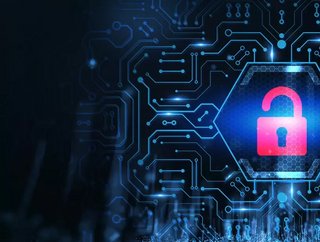Top 10 ways to prevent cyber attacks

With ever-growing threats to businesses, having a robust security solution is essential. Preventing, detecting, or disrupting the attack at the earliest opportunity limits the business impact and the potential for reputational damage.
There are effective and affordable ways to reduce your organisation’s exposure to the more common types of cyber attacks on systems that are exposed to the Internet. Prevention is key and in this article, we’ll take a look at 10 Ways to prevent cyber attacks.
10. Get cyber certified
The demand for cyber security professionals is high with this changing digital landscape. More places are looking to employ but there is a skills shortage.
Certifications can be essential to the career of cybersecurity professionals. There are different certifications that provide skills for different specialisations. As such, certifications allow a cyber expert to gain skills required to specialise in a particular discipline.
9. Access management
Access management protects applications and the data behind them by ensuring the right user has access to the right resource at the right level of trust. You can control access by setting granular policies so authorised individuals can do their jobs efficiently and effectively.
You can monitor user access permissions and the risks associated with each login, applying step-up authentication only when the user’s context changes and the level of risk is concerning.
One of the risks as a business owner and having employees is them installing software on business owned devices that could compromise your systems. Having managed admin rights and blocking your staff installing or even accessing certain data on your network isbeneficial to your security.
8. Regularly change and create strong passwords
A strong password can prevent unauthorised access to devices and networks. It is advised to always switch on the password protection when you are operating some sensitive information.
Having different passwords set up for every application you use is a real benefit to your security, and changing them often will maintain a high level of protection against external and internal threats.
7. Use secure wifi
Most network devices, including wireless access points, are pre-configured with default administrator passwords to simplify setup. These default passwords are easily available to obtain online, and so provide only marginal protection. Changing default passwords makes it harder for attackers to access a device. Only allowing authorised users to access your network can keep it more secure.
Encrypting your wireless data prevents anyone who might be able to access your network from viewing it. There are several encryption protocols available to provide this protection.
6. Train staff
Companies tend to invest most of their time and finances into the right cybersecurity infrastructure and tools, often overlooking the importance of training all teammates on how they can protect themselves and the company from security threats.
Encouraging staff to report all cyberattacks that occur is important. Getting a professional team to train your staff about the potential problems with cybersecurity and how it can affect the office, is a good way to inform them.
5. Ensure endpoint protection
Endpoint security is the practice of securing endpoints or entry points of end-user devices such as desktops, laptops, and mobile devices from being exploited by malicious actors and campaigns. Endpoint security systems protect these endpoints on a network or in the cloud from cybersecurity threats.
Endpoint security is often seen as cybersecurity's frontline, and represents one of the first places organisations look to secure their enterprise networks.
4. Back up data regularly
If your device is infected by a virus, malware or accessed by a cyber criminal your data may be damaged, deleted or held to ransom by ransomware preventing you from accessing it. Backing up your data means you have another copy of it, which you can always access.
Make sure that the external hard drive you are using to back-up your data is not permanently connected to the device you are backing up either physically or over a local network connection.
The best defence against malware is being able to restore data from clean backups. Even when an organisation pays a ransom, there is no guarantee that the attackers will hand over the decryption key. Restoring from backups is more reliable, cheaper, and does not involve handing money to criminals.
3. Use multi-factor authentication
Multi-factor authentication (MFA) systems require two or more factors to verify a user’s identity and grant them access to an account. MFA provides reliable assurance that an authorised user is who they say they are, therefore minimising the possibility of unauthorised access. For these reasons, MFA is much more effective at protecting systems compared to passwords.
2. Install a firewall
Using a firewall is also important when defending your data against malicious attacks. With an effective firewall you can prevent unauthorised access to your computers and network. This protects your data from being compromised. It also gives you extra protection against viruses and malware. If a firewall detects anything suspicious or malicious attempting to enter your private network from the internet, it will not allow it through.
Windows and Mac OS X comes with their respective firewalls, aptly named Windows Firewall and Mac Firewall. Your router should also have a firewall built in to prevent attacks on your network.
1. Keep your software up to date
Software updates are important to your digital safety and cyber security. Often cyber attacks happen because your systems or software aren’t fully up to date, leaving weaknesses. Hackers exploit these weaknesses so cybercriminals exploit these weaknesses to gain access to your network.
To counteract this, it’s smart to invest in a patch management system that will manage all software and system updates, keeping your system resilient and up to date.
- Canonical and Intel Collaborate for Confidential ComputingTechnology & AI
- Shifting left: DevSecOps a proactive approach to cyberOperational Security
- Ma Huateng: Leading Tencent in its 'tech for good' strategyCyber Security
- Trend Micro: The future of cybersecurity in manufacturingOperational Security






